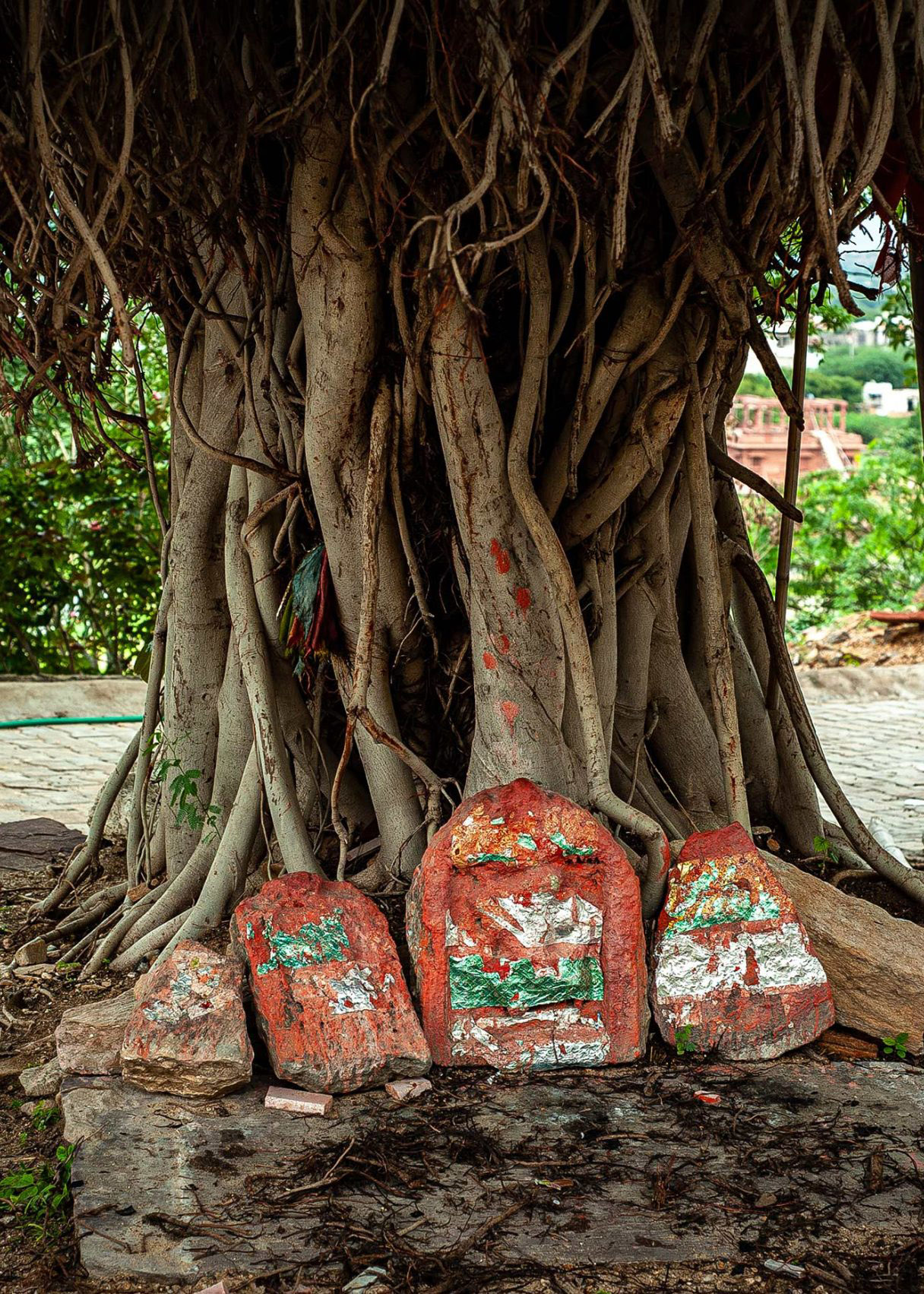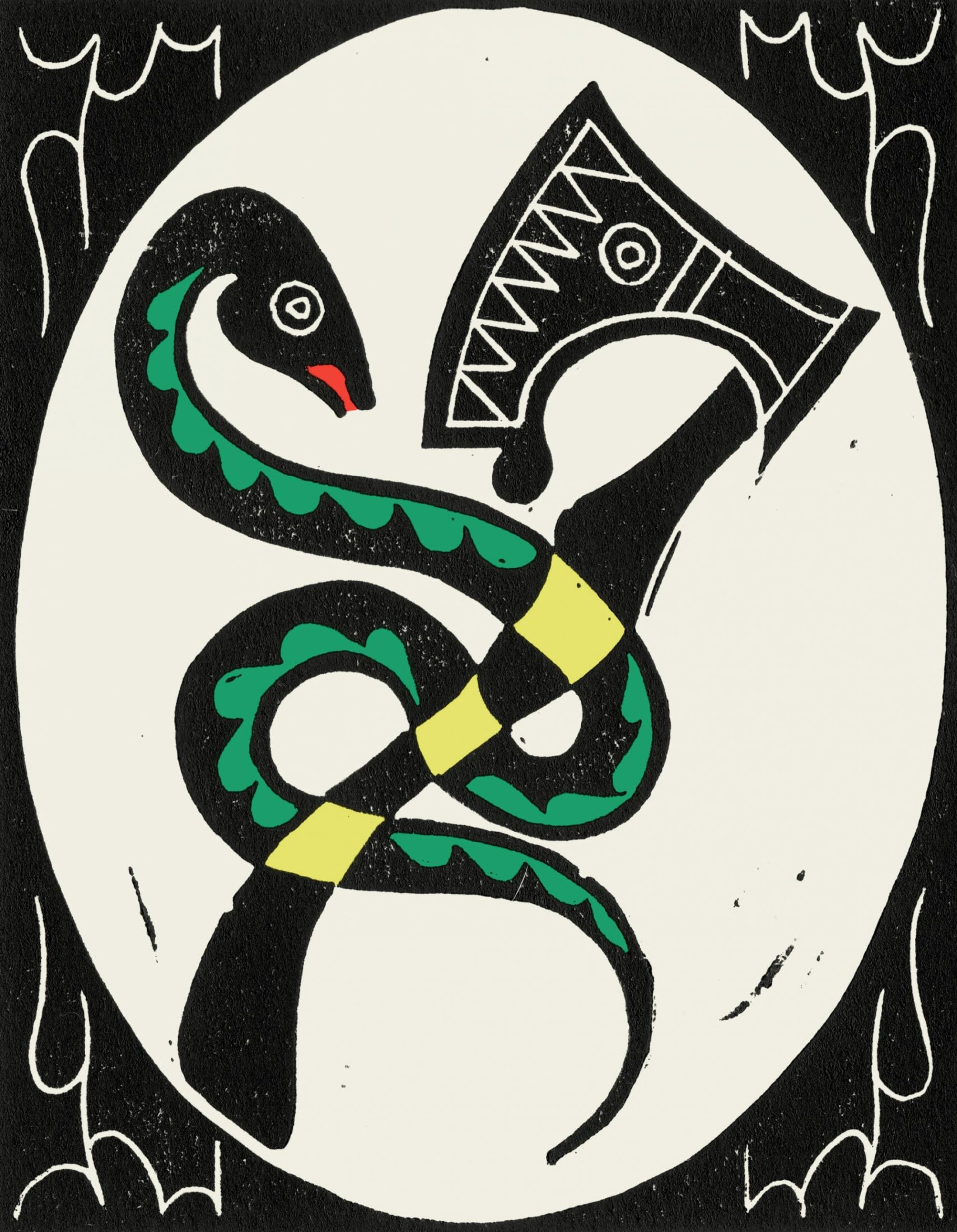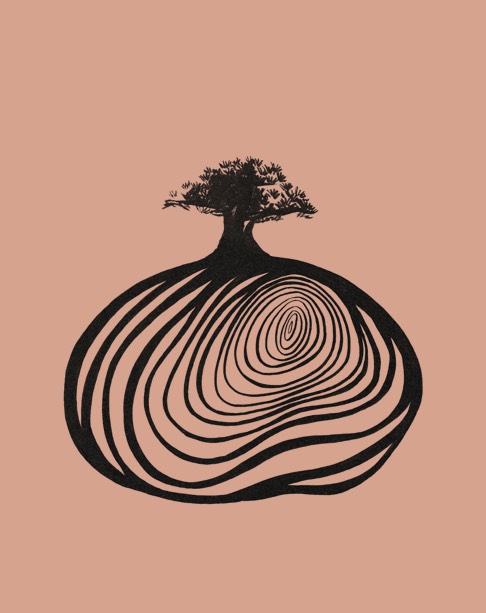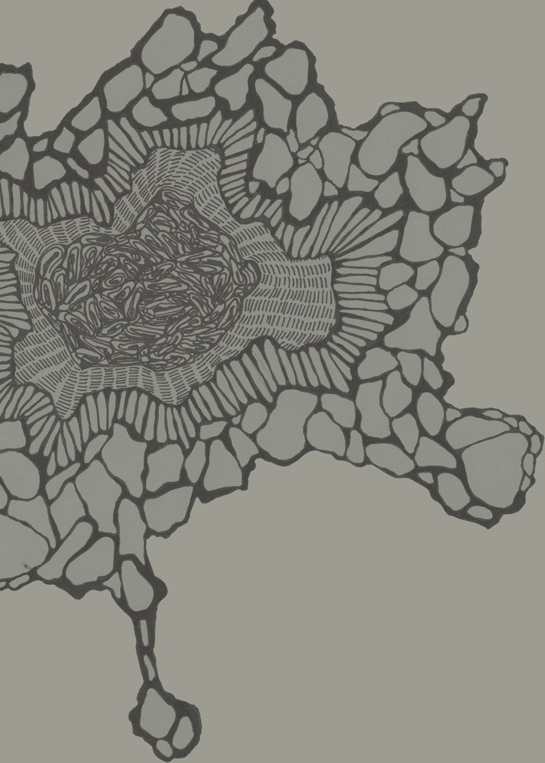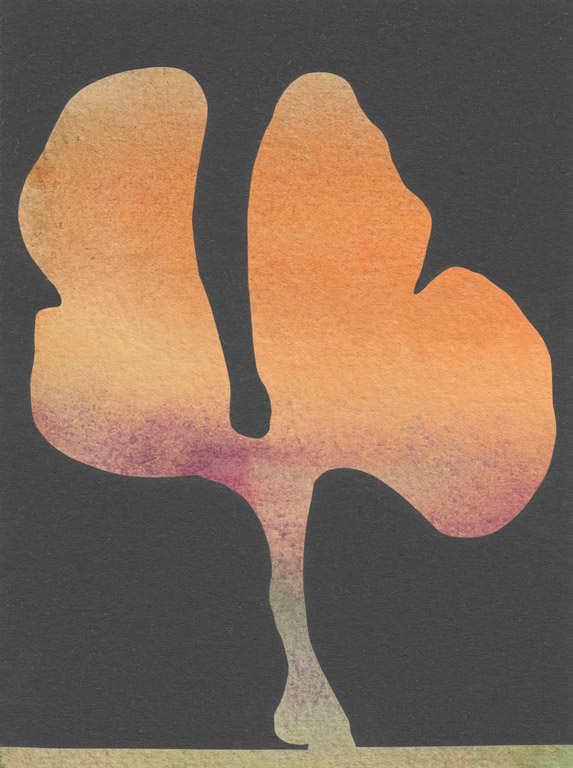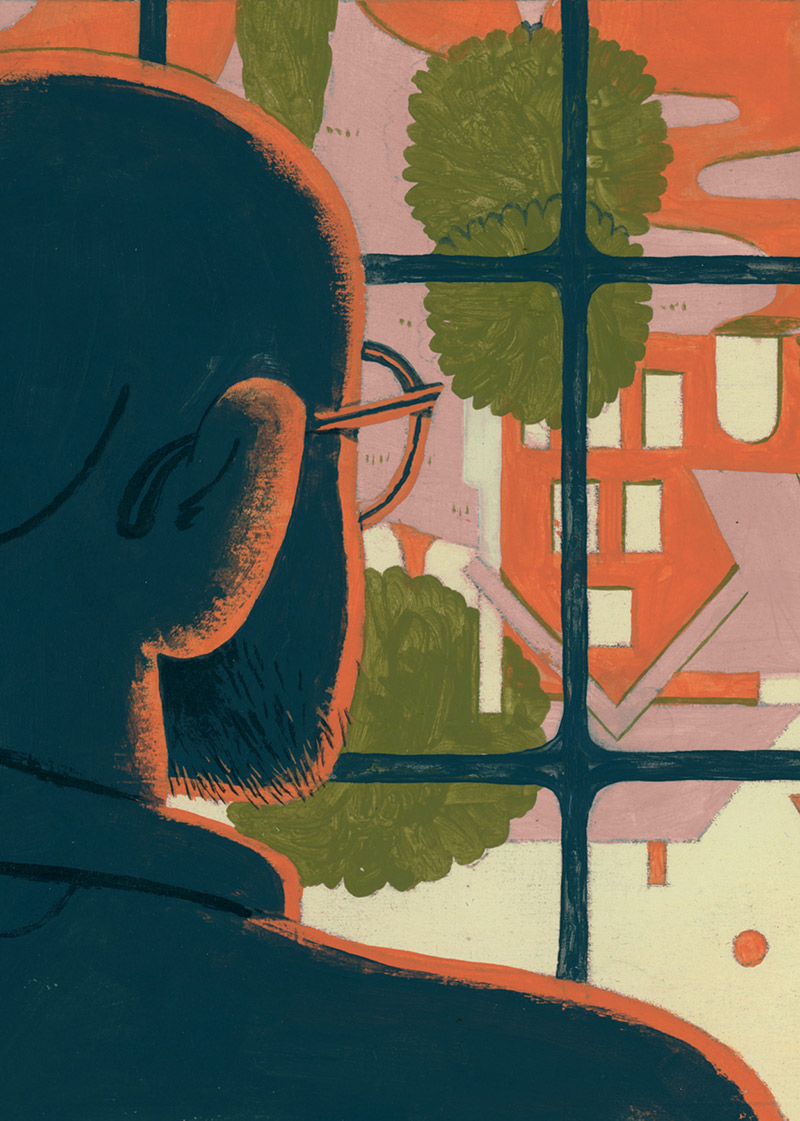
Amaud Jamaul Johnson is the author of Darktown Follies and Red Summer. A former Wallace Stegner Fellow in Poetry, his honors include a Pushcart Prize, the Hurston/Wright Legacy Award, a MacDowell Colony Fellowship, and the Dorset Prize. His work has appeared in American Poetry Review, Kenyon Review, Narrative Magazine, and Best American Poetry. He teaches at the University of Wisconsin-Madison. His latest book, Imperial Liquor, was published by the Pitt Poetry Series.
Hokyoung Kim is an illustrator from South Korea. She studied painting at Hongik University, and received her BFA in illustration from the Ringling College of Art and Design. Her clients include The New York Times, The New Yorker, The Atlantic, and others. She currently lives in New York City.
In this essay, Amaud Jamaul Johnson returns to his poem “The Maple Remains” for the centennial anniversary of the Red Summer of 1919. Through historical witnessing we see the deep ties between racial and arboreal scars.
The sort of trees that knot and choke the light from the air—live oaks and poplars, the source material of nightmares or the near-comic, nostalgia-ridden parodies of the Deep South—were foreign to me growing up in Los Angeles. The pencil-thin shadows of palm trees crosshatching the landscape in L.A., like a second network of downed power lines, seemed both dangerous and decorative. They offered no comfort, no quarter, no sanctuary from the heat. Everything was visible in that light, what was beautiful or broken. The light sprawled like the city, suburb after suburb unfolding relentlessly, from the Wilshire District to Compton to Orange County. I don’t know if it’s strange to have a memory of childhood without shadows, without trees. We felt submerged in light, as if we were mostly bathing or drowning in it; our house, our cars underwater, the world pouring in, as if we were waiting for a second Pacific to consume us.
The wildfires seemed a magnification of that light. Almost as if the ground couldn’t bear it. As if a brushfire were a manifestation of collective struggle, of our suffering—what anticipates or is nostalgic of riots. This past fire season, to look at those pictures of flames skirting the Getty, or the destruction of Paradise in 2018, it’s a spiral, Dante’s pinwheel, as if every fall were a reboot of the world ending. Maybe California is phoenix-like or the whole state is slowly being erased. Ironically, given all of its natural beauty, everything about home felt apocalyptic, particularly in the 1980s. Earthquakes, El Niño, gang violence, the bomb: for most of my childhood, I thought I wouldn’t live through the week, and that didn’t have anything to do with my lifestyle, nothing to do with “personal choices.” My grandmother would tell me, as I left the house, “to be careful, to stay vigilant.” But what control, what power did I actually have over what happened to my body? I moved through the world as if I were floating. All I remember was holding my breath. I couldn’t see how to slow down the avalanche of pain shaping that world. The world burning seemed an outward expression of my inner life, how I was sandwiched between a never-ending flood and the fires forever approaching.
Every movie about Black L.A. in the late 1980s and early ’90s was about escape: one boy leaves to attend Morehouse College in Atlanta, another boy is shot dead in an alley or cut down in the front yard of his girlfriend’s house, blood streaking the confused expression on his face. We don’t think about urban violence as an extension of environmental violence, but these anxieties are linked. Food deserts, the distance between gas stations, how far someone has to travel for a “sit-down” restaurant or to see a movie: how quickly these transformations or redefinitions of space make us strangers. It’s how we think about our future, how we quantify and distribute resources. Those drive-by shootings were a form of violence connected to that landscape, like the ghosts of orange groves cut down to develop all those single-family homes, and the white flight that necessitated a broader transformation, pressing to make the uninhabitable home. From its inception, the suburb was a site of violence, and those Black families entering the wake left by white flight inherited that environmental trauma, a landscape scarred. The Black southern transplants from Texas and Louisiana escaped the atrocities that contradicted America’s self-perception as the world leader of democratic values. In this new world without trees, where very little was green, everyone marveled at that quality of light. Life on the front porch, in front yards, that feeling of standing in the sun, was a new city life and the old country combined, until their neighbors’ children, dressed in primary colors, opened fire.
Gangsters weren’t lynch mobs. Being run down by a ragtop Impala wasn’t the same as being chased on horseback, hunted by some wild-eyed Klansman swinging ropes in the moonlight. This was a new Wild West. Blame the palm trees, but Los Angeles felt like an island or, possibly, a gilded cage: the ocean on one side; the mountains, the desert, in the opposite direction. And if you couldn’t swim and you weren’t a mountain climber or the owner of a camel, you were stuck. I developed fantasies about the South, not nightmares. You know the idea: a big house for next to nothing, land, a porch swing, sweet tea, room to breathe. I was so removed from the history of Slavery that I didn’t think about that landscape as haunted, that anything lingered in those shadows. In my imagination, at least, I wanted something lush, a lush life. I didn’t understand that running without a plan often leads to greater danger, or more running. I escaped into the arms of another environment as if they were the arms of an old lover, ignoring a history of abuse.
We don’t think about urban violence as an extension of environmental violence, but these anxieties are linked.
I moved to Atlanta in the summer of 1998 and worked in the Special Collections Department at Emory University, starting an entry-level position as a collections processor. My primary duties were to build reference guides for those generally interested in African American history and culture. The families of prominent Civil Rights leaders, or African American writers and visual artists, would donate boxes, crates, and suitcases full of items to be sorted and labeled. It was a dream job. I would look at old photographs, read love letters, scan receipts or stalled attempts at autobiography. We carried an unusual collection—the Allen-Littlefield file—which was an assortment of postcards of lynching scenes. The images themselves were horrific, but the idea that people found them entertaining enough to send to their friends and distant relatives, that people held so little empathy for other human beings, always knocked the wind out of me.
Racial violence isn’t easy to dismiss, because it has a clear purpose in American history; it’s a method of control. Fear is about control. Looking on the faces of those in a lynch mob, one sees that they’re everyday citizens. Lynching scenes could easily have been church picnics if there hadn’t always been a body hanging from a tree. Ethically speaking, how could this collection be put on display? However, keeping these images tucked away in a few folders in a temperature-controlled room seemed like its own act of violence.
This is the challenge of facing our history: How do we honor the dead without revisiting trauma? What do we memorialize? What do we work to cut down? Shortly after I left that job, the collection was published as a photo-essay book called Without Sanctuary. The images went on tour in a national exhibit, but not without controversy. Some questioned whether this was an attempt to profit from the dead, arguing that it was a second lynching to hang these bodies again in a museum. We’d unearthed evidence of a crime. If the photographer was a member of the mob, how can the viewer of these images not be complicit in murder?
Confronting our past, we’re analyzing the DNA of American racism and trying to figure out how to inoculate ourselves against greater harm. Hope for change means little. We have work to do. One of the reasons I started writing poetry was that there were things I couldn’t figure out how to say, or who would listen, even if I had the nerve to speak my truth. From my work at Emory, I developed an interest in the history of race riots in America. It wasn’t the bodies that troubled me. I couldn’t unsee the expressions on the faces of the mob, especially those children. There’s one, the half smile of what looks to be a ten-year-old girl staring up at a man’s charred feet. I wanted to know: What kind of woman did she become, what did she come to understand about love, what was the legacy she left her grandchildren? This is America, and the heartbreaking truth about what we’ve inherited.
My first poetry collection, Red Summer, responds to a series of race riots that occurred during the summer of 1919. Through this work, I attempt to analyze and own the aggression that makes us American. Approximately twenty-six riots took place over an eight-month period that year, crisscrossing the country—including Washington, DC; Chicago; Elaine, Arkansas; and Longview, Texas—with death totals that mirror the numbers killed today in mass shootings. I faced the same challenges that researchers faced approaching those postcards: how to honor the dead without profiting from their pain. I attempted to write a poem about the murder of Lloyd Clay on May 15, 1919.1 Clay lived in Vicksburg, Mississippi, and was accused of attempting to rape a nineteen-year-old white woman, Mattie Hudson. The same night he was arrested, a mob of between eight hundred and a thousand broke into the jailhouse. Clay was hanged, burned alive, and shot repeatedly. Shortly after his death, there were rumors that the young woman’s father had caught her with a lover, a white man, and Clay was his chauffeur.2 Clay’s murder was her father’s twisted form of revenge. Other accounts suggest Clay broke into Hudson’s rented room at a boarding house. Clay’s family pleaded his innocence. He was in his early twenties, the dawn of adulthood, and the story of his murder is sadly common. I couldn’t write about him. I wrote several drafts of a poem about his body in that tree, about the crowd. Those gun shots. I wanted to say there must be a special place in hell for such people, but maybe hell wasn’t big enough to hold all that evil. Writing a poem, you think about the subject from every angle. I thought about his body, I thought about the rope, the flames, I thought about the tree. What did it feel like to be the eye of a mob? Maybe the kind of man who can tie a noose knows the land and is good with his hands, understands how to tend livestock, or loves to fish. As much as this violence was the craftsmanship of white men, it was done for the imagined virtue of white women. This was my way into the poem, the symbolism behind his death, the scar the fire left on the tree, which was a scar on the community’s’ spirit.
The Maple Remains
Vicksburg, Mississippi May 16, 1919
For the general good
Such, even the smell
Is customary; like figs
Gray and gamy, rotting
Among the orchard mulch.
And an old woman
Remembers her children
As little monkeys for its branches,
Their hinged arms and legs are
Indistinguishable at dusk.
She remembers the clearing
When she and her husband
First arrived in Vicksburg;
How Charles leaned against
The trunk, his face washed
With shadow and smoke;
How he looked at the land
The crest and its antiseptic
Slopes and said “this is home.”
The old woman remembers
And pleads for its felling
And a young man gazing
Among the throngs responds:
“What was done here
Last night, was done
For you and for every
Woman and for every
Girl in Warren County.”3
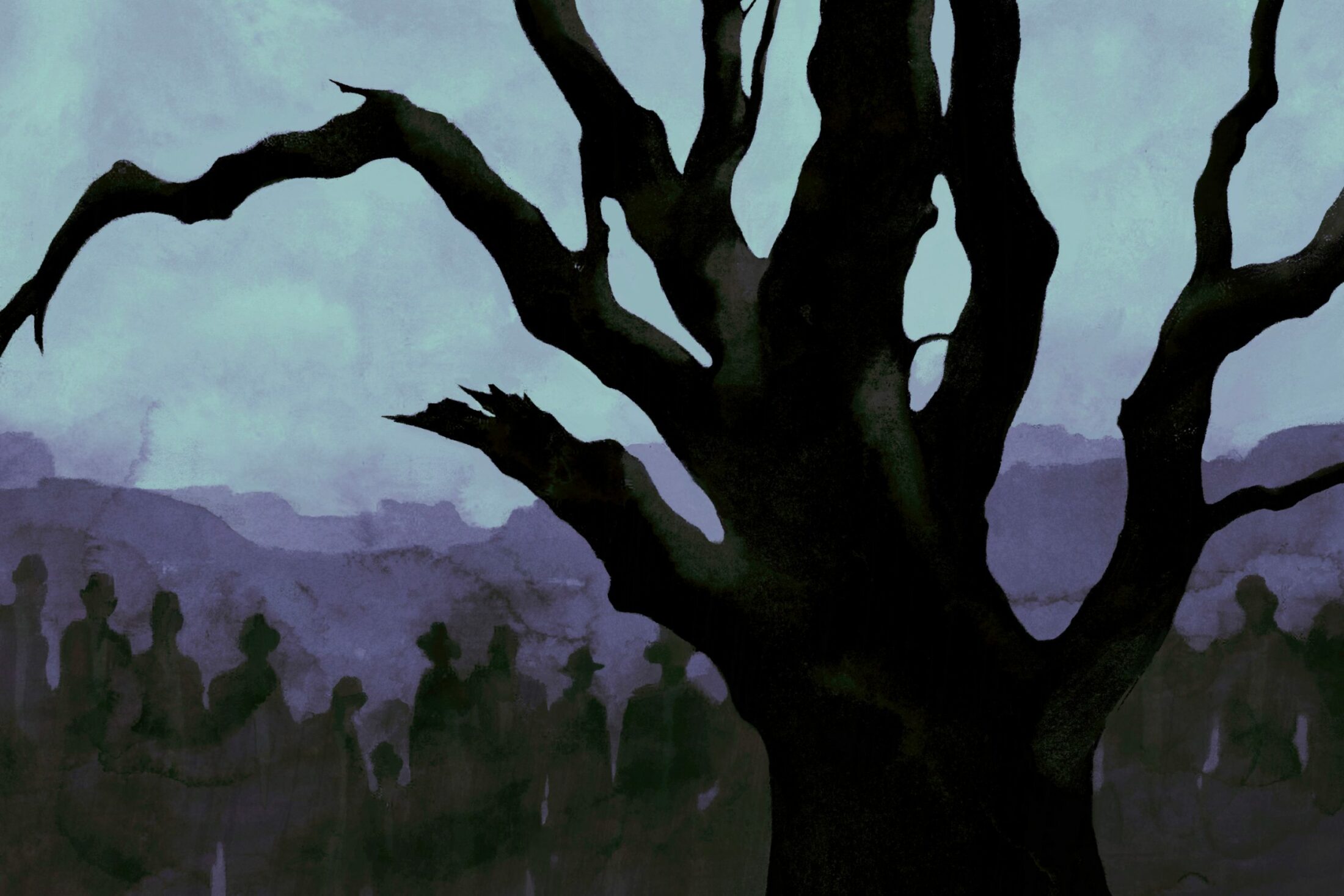
This poem takes place the morning after Clay’s murder. Writing in the third person, I wanted to imagine a widow’s reaction, confronting a tree on her property. Because so much of the violence in the Deep South was engineered with the idea of protecting white womanhood, I considered the parallels between a scarred landscape and this woman’s psychological scars. The tree, once a source of nostalgia, became a symbol of the brutalized Black body and a site of trauma. Maybe what makes a tree an interesting symbol is that no one looks at it the same way. What we imagine in its branches reveals something about us, about our inner world, our dreams and nightmares.
Georgia wasn’t the promised land, but living there helped me understand more about how to read bodies, and how my Blackness moves through the world. When I was growing up in Compton, walking down the street with my friends meant people would see us coming and move out of the way. I realize this reaction is at the heart of racial profiling, but because we were naïve, their fear felt like power. One afternoon, while walking back to my apartment from Emory, I noticed a large group of white men approaching me. I felt nervous. Maybe Lloyd Clay’s story loomed larger in my consciousness. Without words, or any kind of exchange, it was clear who should step off the sidewalk. I felt the burden of history. The laundry list of reasons I hated Atlanta is too long, but once, at a dinner party, I made the mistake of referencing the Civil War and someone corrected me, calling it the “war of Northern Aggression.” My laughter quickly waned. Some people are still trying to refight, rewrite, or relegislate battles already won. I was done. Because of money and marriage, I found myself in Wisconsin.
We own a black-and-white colonial in a historic neighborhood in Madison. We’ve lived here now for over a decade. It’s the only place our children know as home. Recently, we cut down a large silver maple in our backyard. It was nearly one hundred years old. The children all around us took turns counting its rings. It sat on the property line between our house and our neighbors’, and every heavy rain or windstorm, we held our collective breath. A few summers ago, on a cloudless day, midafternoon, a limb fell. It was large enough to cover the length of our shared backyards. My neighbor Susan has an elegant garden. Every spring is a light show of flowers. She and her husband, Terry, lived in their house for almost forty years. We’re the only Black family in this neighborhood, the second family to live in this house, and the former owners had refused to cut the tree down. We knew it was big, and it worried us, but we loved the shade, and as much as we feared roof damage, we thought long and hard about the additional cost to keep the house cool in full sun. Terry and Susan’s granddaughter Sara was playing in the backyard when the limb fell. It was soundless until it hit the ground, and had it fallen differently, the limb would have killed Sara and her babysitter. She was playing on the swing set I had built. It was a miracle or a warning, depending on how you read signs.
How do we honor the dead without revisiting trauma?
Even after that, we didn’t rush to cut it down. Every arborist who inspected the tree said it was healthy, but with silver maples, and any tree that old, one said, “you never know.” He added, “It’s a question of what’s keeping you up at night.” I had enough on my mind. In the spring, I can’t stay ahead of the weeds, the creeping Charlie choking the grass, the vines in my perennials, the box elders threatening the fence. Our drainage is bad, so when our gutters overflow, water runs into our basement. Yes, these are the many joys of homeownership, but there’s something about Wisconsin, a way you feel that you’re constantly fighting the elements. I’ve become painfully aware that I’m a transplant from the West Coast. Life here takes a toll on your body. I don’t complain, for fear that my neighbors will say I’m lazy. I think they seek out suffering, the Wisconsin way.
That silver maple made my youngest son fearful of bad weather. He would stare out of his window, reading the clouds for trouble, studying how the wind moved the limbs. He became a junior meteorologist. He could read danger with every sway or dipping motion. He had a right to be afraid. His bedroom was closest to the backyard, so he believed that if something horrible happened, it would happen to him. But in the way children often love what they fear, he was drawn to the tree. He thought about its age, its inner workings, the networks hollowed out by squirrels, made soft by pooling water, the wood rot. The tree became a dream world of sorts. And it became a great source of tension between our neighbors and us.
When we bought our house, we had three trees, two in the front yard and the one out back. The city took down our front trees without giving us notice. Maybe they were too old, or had suffered from Dutch elm disease, or emerald ash borer disease. Tree stumps pockmark our city. The silver maple saved us from being a treeless family. I don’t find raking leaves meditative, but our tree spit down an assortment of material from spring through late fall: helicopters that clogged the gutters, and these tiny brown pods that stained our deck. A headache that gave our house its identity. Blocks away, you could see it towering above everything, the branches like purple veins spread through the sky, leading us home.
Just over two years ago, Terry, the husband next door, was diagnosed with Stage IV pancreatic cancer. He was given only a few months to live. Terry was a Vietnam veteran and a retired mathematician, did yard work all day, and would rollerblade for thirty miles in bad weather. He had this incredible life force, an energy. He and his family did everything they could. When he was gone, it didn’t seem right that the tree was still standing. Terry was taller than that tree, so we cut the lesser of the two down. Susan kept a section of the trunk in memoriam. Now we get full sun in the yard, full sun streaming into every corner of our home. The house is at least ten degrees warmer. We had historic rains this summer. The same story everywhere: record rainfall, record heat. Our last big thunderstorm, I told my son there’s nothing to worry about, the tree is gone. He looked back at me silently. He still stares out of his window. He still can’t sleep.

- I first learned of Lloyd Clay’s murder from a catalog of crimes published in The Crisis magazine, July 1919, p. 155. At the time I wrote this poem, few sources were digitally available. While many details about this incident are in question, multiple reports state that Clay was lynched on May 14, 1919.
- Other reports claim that Clay wasn’t a chauffeur and worked as a day laborer. In connection with this incident, a Black man named St. Clair was arrested and later released: Albert Dorsey Jr., “A Mississippi Burning: Examining the Lynching of Lloyd Clay and the Encumbering of Black Progress in Mississippi during the Progressive Era” (master’s thesis, Florida State University, 2009), https://fsu.digital.flvc.org/islandora/object/fsu:168847/datastream/PDF/view. See here for an additional account of this incident: Ralph Ginzburg, 100 Years of Lynchings (Baltimore: Black Classic Press, 1988), 120.
- “The Maple Remains” from Red Summer, by Amaud Jamaul Johnson, published by Tupelo Press. ©2006 by Amaud Jamaul Johnson. All rights reserved. Reproduced with permission of Tupelo Press.

